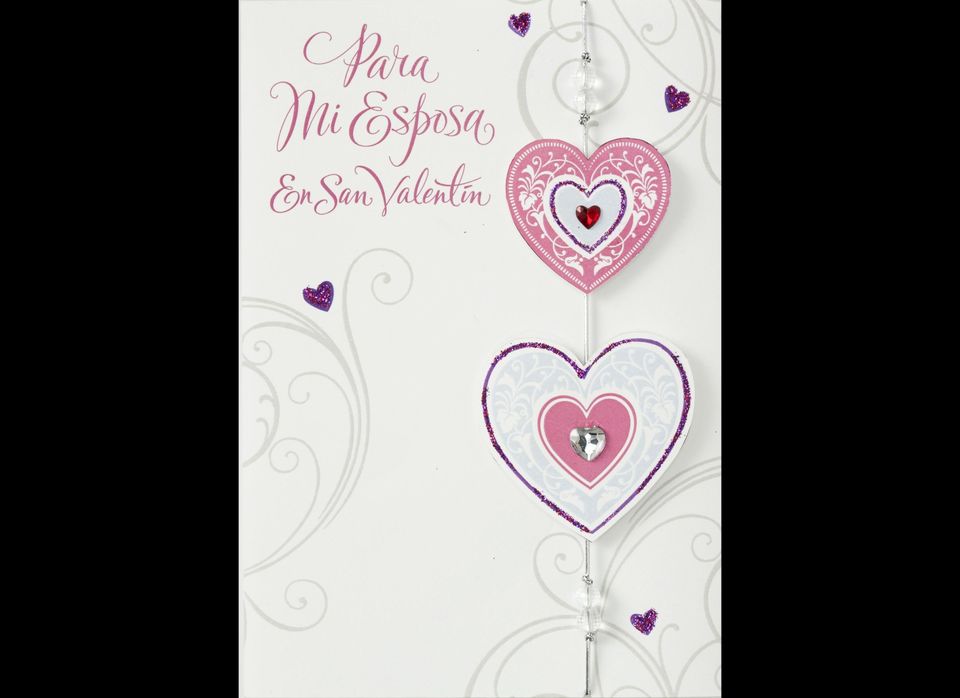As America gets ready to celebrate Valentine's Day, here's a bit of trivia from elsewhere in the world. In many parts of Latin America, Valentine's Day is not just for people who are in love. It's known as the "Día del Amor y la Amistad" -- the Day of Love and Friendship. If you live in the United States, chances are you have a Latino friend or neighbor. After all, the Hispanic population within the U.S. now accounts for more than 50 million people, or approximately one out of every six Americans, according to the Census Bureau.
In response to the demand for cards for Latinos, Hallmark has offered a line of cards in Spanish for several years. I wrote about Hallmark's unique process for developing those cards in my new book, Found in Translation. To shed more light, I contacted Sergio Moreno-Denton, one of the members of the team responsible for those Spanish-language cards. (To see some of the actual cards created by his team, see the slideshow below.)
Can you explain more about what you do, and how it relates to translation?
I'm the editorial director for a small -- but mighty -- team of word people and artists creating a Spanish-language line of cards called Hallmark Sinceramente. My art director leads the design side of things, and I focus on the writing. My editor and I work closely with writers, requesting and applying new writing to our greeting cards. But we also spend a fair share of our time transcreating. We have a very talented pool of writers and a vast collection of writing, so as editors, we often tap into those resources and rewrite English pieces into Spanish. This is how our work relates to translation, although we rarely use that term. We prefer "transcreation," as it allows for the creativity and poetic license our needs demand.
How did you begin working in this field, and who else works with you?
There was an opening for a bilingual editor at the company 10 years ago. The Sinceramente line (previously Hallmark En Español) had just been launched and it was a very exciting time to join. I went through a rigorous portfolio and application process, earned an interview, and shortly thereafter was offered the job. I'm lucky to work with so many brilliant artists, writers and all sorts of creatives. Most of my time is spent collaborating with my art director, editor and designers.
What kinds of skills are required for this work?
A mastery of both Spanish and English is essential, of course. But beyond that, this work requires a keen sensibility for social expression, human interaction and well, a way with words! We strive to help people say what they need and want to say, just the way they would say it. But then again, we need to be able to say "Happy Birthday" in a hundred different ways. This presents unique challenges when it comes to working in the Spanish language, of course.
What are some of the greatest challenges about developing cards for Spanish speakers in the U.S.?
We exist to serve U.S. Spanish speakers. Our goal is to be as meaningful and relevant to them as we possibly can, to help them celebrate life's special moments and to turn everyday moments into cherished memories. But U.S. Spanish speakers are not a monolithic consumer base. We Spanish speakers represent so many different countries of origin, so many levels of acculturation and generations; we live and work all over the country, and even our Spanish is different from one region to another! While it is very convenient to group us all under one category, we know and understand that this is not the reality. So, one of our greatest challenges is to create greeting cards that ring true and feel authentic to all Spanish-speakers, regardless of their family's country of origin.
Have you come across any tricky terminology in Spanish, words that mean something different in one country versus another?
Have I ever! There are certain colloquial terms and slang words that we simply avoid because we've been made aware of their alternate meanings and interpretations from one country to the next. But I'll share a family-friendly example. Many years ago, a colleague from Puerto Rico suggested that we use a different word for birthday cake on our cards. Being from Mexico, the word I grew up with is "pastel." He explained that "pastel" is a very specific type of savory pastry and that he'd prefer that we use the word "bizcocho." Well, that's an entirely different thing in Mexico. And then, where do you stop? What about those who call it a "torta?" There would've been no end to that, so how did I solve it? Rather than referencing the cake, I wrote something about "apagar las velitas," because most of us will agree that that means only one thing: to blow out the candles.
What do you think would surprise people the most about the work that goes into producing Spanish-language cards?
You'd be surprised at how long we can discuss something as seemingly insignificant as a font choice. We are one picky bunch. We don't let a single card leave our approval room unless we think it is the absolute best. We're kind of nerdy about this, and proud of it, too. But we also know that's what our consumers expect of us.
What is your favorite aspect of this job?
When I go home after work, I know that I did something today that will bring people together, help them share a happy moment, comfort each other during a difficult time, say how much they love each other, or simply put a smile on someone's face. And I get to have that feeling, every single day. That's something I don't take for granted.
